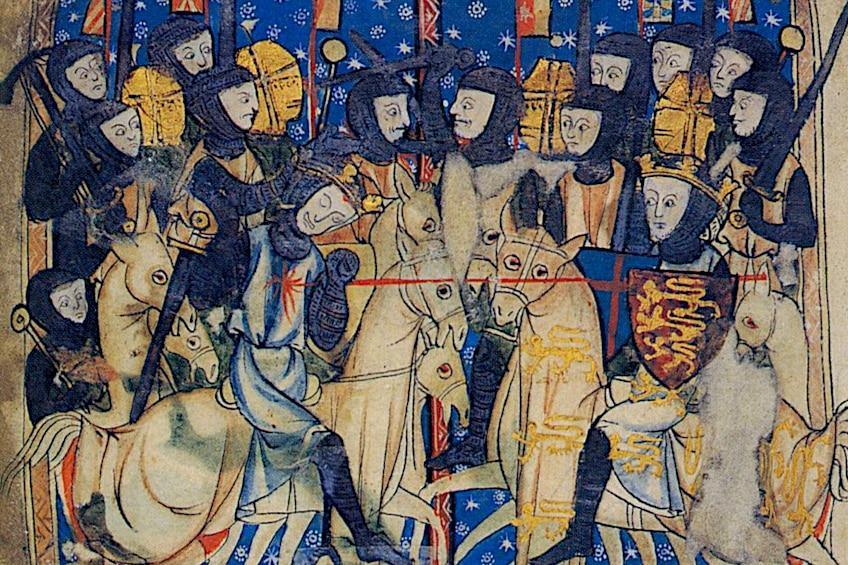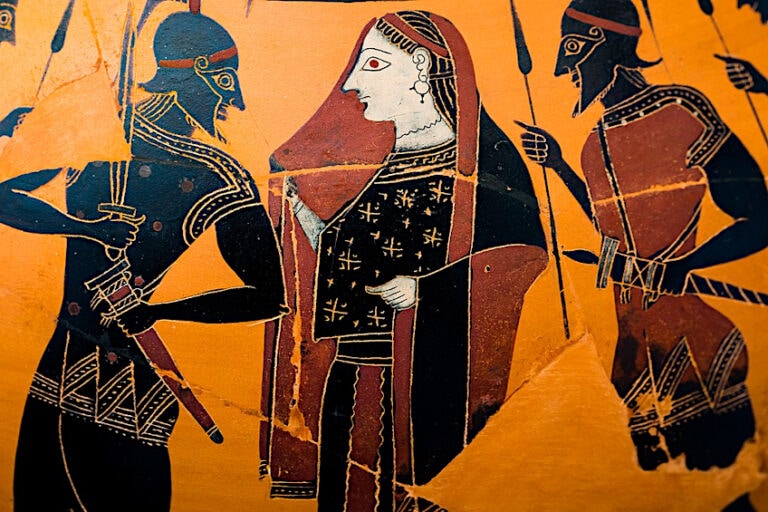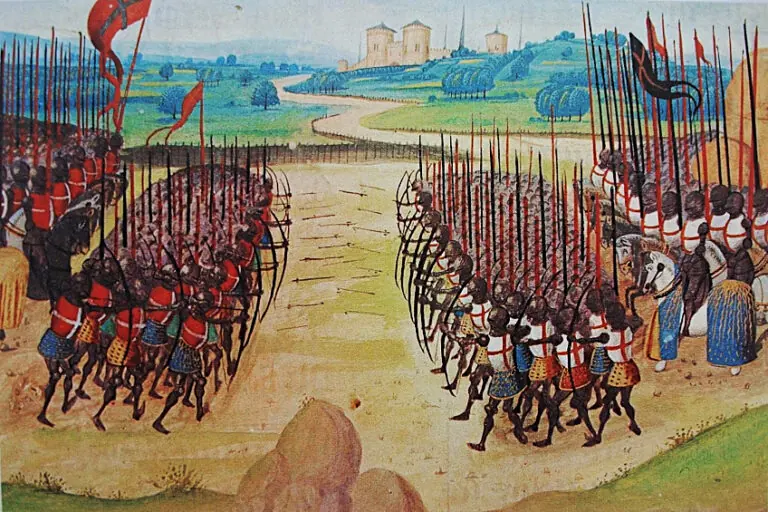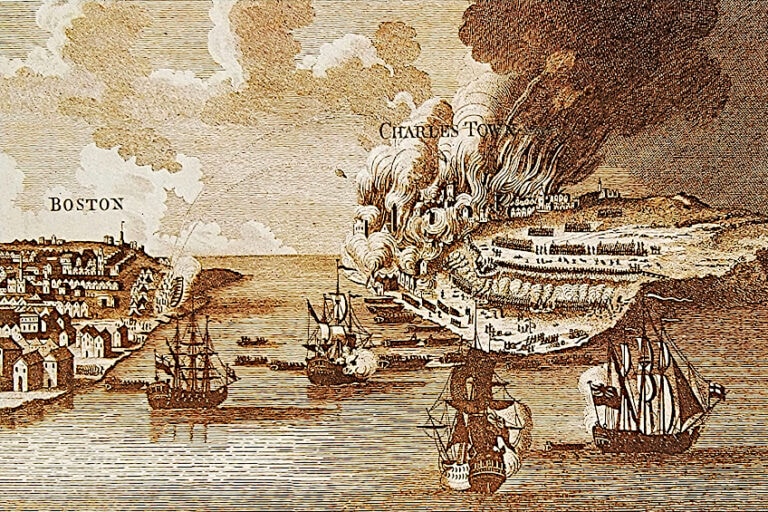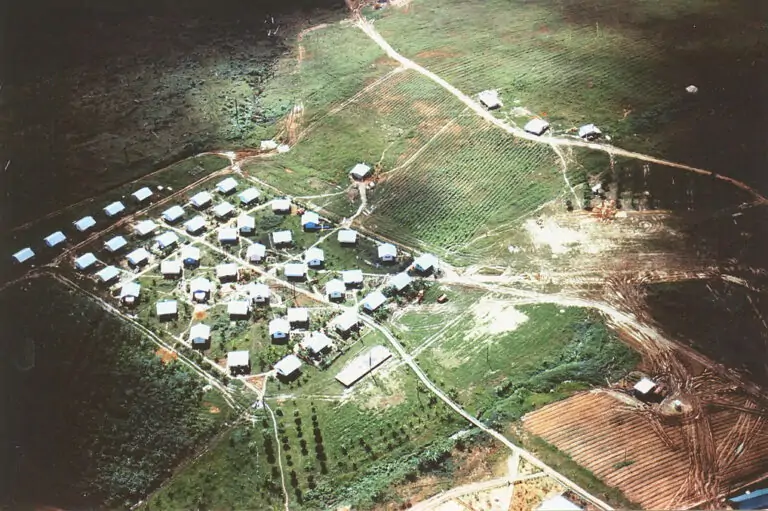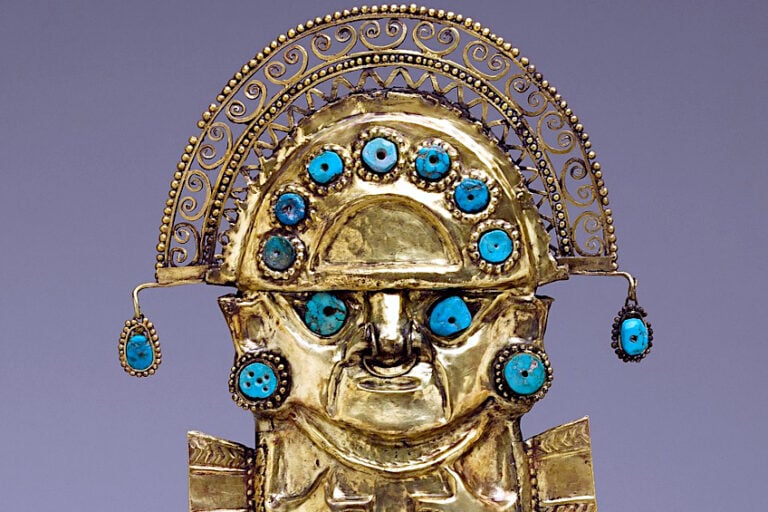Battle of Hastings – The Norman Conquest of 1066
On the 14th of October 1066, one of the most significant battles in English history would occur, the outcome of which would forever reshape the socio-political landscape of Medieval England. Fought between the Anglo-Saxon army of King Harold of England and the Norman-French army of Duke William II of Normandy, the Battle of Hastings sought to determine which of the two men would reside over England’s contested throne. Taking place in southern England, seven miles northwest of the town of Hastings, the battle concluded in the Duke’s victory, thus ending the 600 years long rule of the Anglo-Saxon Kingdom and initiating the Norman Conquest. If you are interested in what happened in the battle of Hastings, join us as we delve deeper into this momentous occasion in history, how it came to be, how it went down, and what it subsequently wrought.
Contents
Summary of Events
Much occurred before, during, and after the Battle of Hastings. Notably, its aftermath saw an immense upheaval and change throughout England. If you require a quick dissection of the battle, here are some key facts about the Battle of Hastings.
- The battle was fought over the contested throne of England. The crown was given to Harold Godwinson, the Earl of Wessex, following the death of King Edward the Confessor. Harold’s succession was disputed by Duke William of Normandy.
- Harold Godwinson would be crowned King of England in January of 1066. However, Duke William of Normandy would contest the anointing, claiming that the deceased Edward had instead promised the throne to him. Furthermore, the Duke asserted that Harold had sworn an oath promising to support any rights to succession that he had to the throne. Harold’s crowning was seen by the Duke of Normandy as a great betrayal.
- Duke William’s Norman-French army arrived on the south coast of England in September of 1066. Harold soon thereafter marched his army southward to meet them in battle.
- The Battle of Hastings was fought on Senlac Hill. This was roughly 7 miles northwest of the town of Hastings, with the Norman army approaching from the foot of the hill.
- The ensuing conflict lasted the entire day and heavy casualties were inflicted on both sides. Ultimately, however, the Norman army succeeded in breaking through the Saxon shield wall and King Harold met his end in the skirmish.
- This particular Norman victory was an important moment in history as it marked the conclusion of Anglo-Saxon rule in medieval England. This lead to the foundation of the Norman Conquest, which caused a substantial alteration to English culture, society, and language.
- The Bayeux Tapestry is perhaps the most famous visual representation of this historical battle. It is still located in France’s Normandy region, and is a huge embroidered cloth that depicts the events that led to the Norman Conquest and the Battle of Hastings itself.
- The Battle of Hastings is almost unanimously considered by medieval historians to be one of the most pivotal battles in the history of England. To this very day, the impact it wrought on English history, culture, and traditions are still evident.
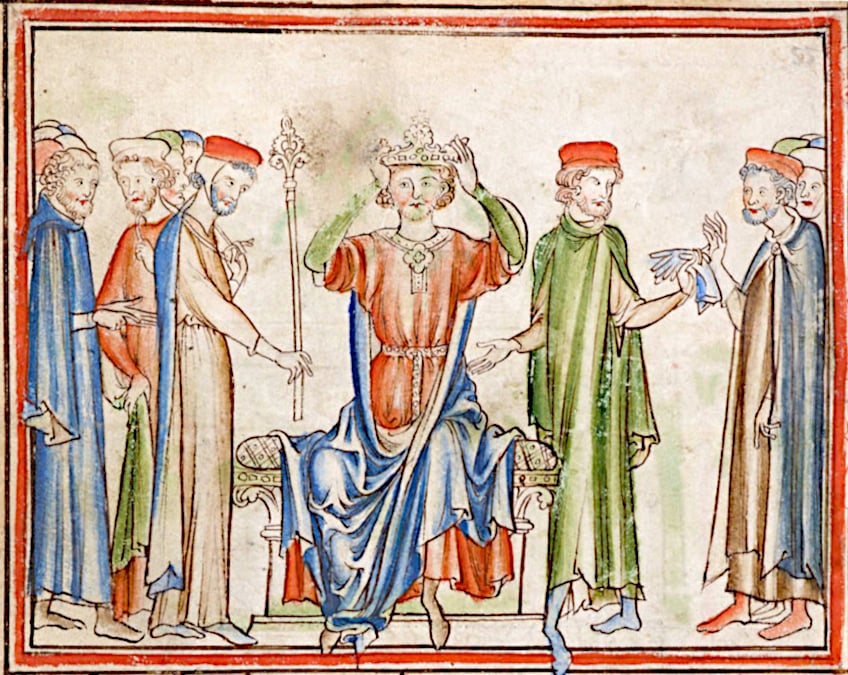 Harold Godwinson crowns himself King Harold II of England (13th Century); Anonymus (The Life of King Edward the Confessor), Public domain, via Wikimedia Commons
Harold Godwinson crowns himself King Harold II of England (13th Century); Anonymus (The Life of King Edward the Confessor), Public domain, via Wikimedia Commons
A Contested Crown – How a Regal Rivalry Was Born
| Name of the Battle | The Battle of Hastings |
| Overarching Conflict | The Norman Conquest |
| Date | 14th October 1066 |
| Location | Hastings, England |
| Combatants | England versus Normandy |
In 1066, the right to England’s throne was under contest following the death of King Edward The Confessor. The pious king was the preeminent monarch of his time but his oath to celibacy left the throne without a definitive heir following his passing. Itching to fill his void, the power-hungry Anglo-Saxon nobility and several other contenders put forth their claims to the throne, ensuring the inevitability of a battle for control.
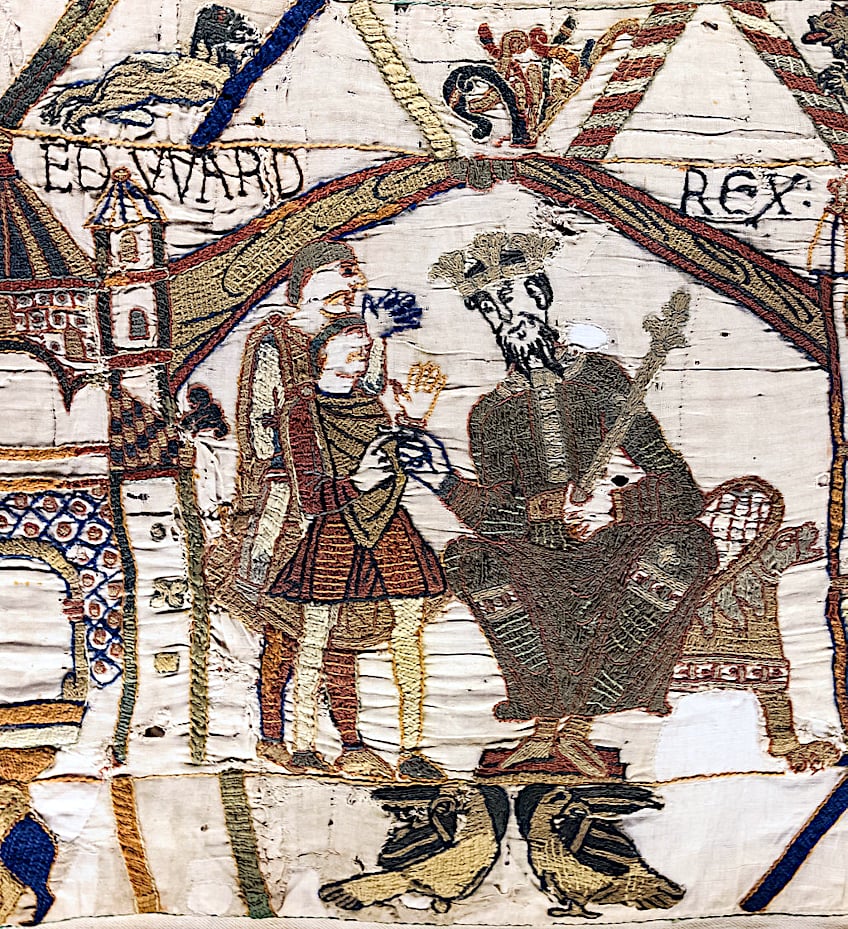 Scene 1 on the Bayeux Tapestry: King Edward the Confessor and Harold Godwinson at Winchester (between c. 1051 and 1100); Bayeux Tapestry Museum, Public domain, via Wikimedia Commons
Scene 1 on the Bayeux Tapestry: King Edward the Confessor and Harold Godwinson at Winchester (between c. 1051 and 1100); Bayeux Tapestry Museum, Public domain, via Wikimedia Commons
One of Edward’s most trusted advisors, Harold Godwinson, the Earl of Wessex and a nobleman who wielded substantial power, was the first claimant to the throne. It would be he who was crowned King of England. However, it would not be too long before his claim would be contested by Duke William of Normandy. William would claim that Harold was a usurper, arguing that Edward had promised him the throne and that Harold had sworn an oath to support his claim in 1064 while being kept as his prisoner. According to Duke William, Harold’s succession did not only overrule the late King’s wishes but was also a deceitful means of breaking his oath.
Another key figure disputing Harold’s anointment was Harald Hadrada, the King of Norway, who had begun to invade England the month before Edward’s death. His claim as heir to the throne was based on his descendance from Cnut the Great, the Danish King who ruled over England during the 11th century.
King Harold and Duke William – From Friends to Foes
The relationship that King Harold Godwinson had with Duke William of Normandy was complicated, to say the least, and its characterization shifted between both alliance and rivalry. There is much evidence to indicate that either party had shared each other’s company on numerous occasions, enough so to believe that the pair knew each other personally.
Most notably, Harold was taken as a captive of Duke William in 1064 when he was cast ashore following a shipwreck along the Normandy coastline whilst on a mission for King Edward. He would later find himself released unharmed by the Duke, at which point he was allowed to return to England.
By the accounts of Duke William, his release was arranged under the condition that he would supported William’s claim to the throne when King Edward dies. After the death of King Edward in January 1066, when Harold Godwinson was crowned King of England, Duke William saw this as a monumental betrayal. To him, Harold was nothing short of a usurper.
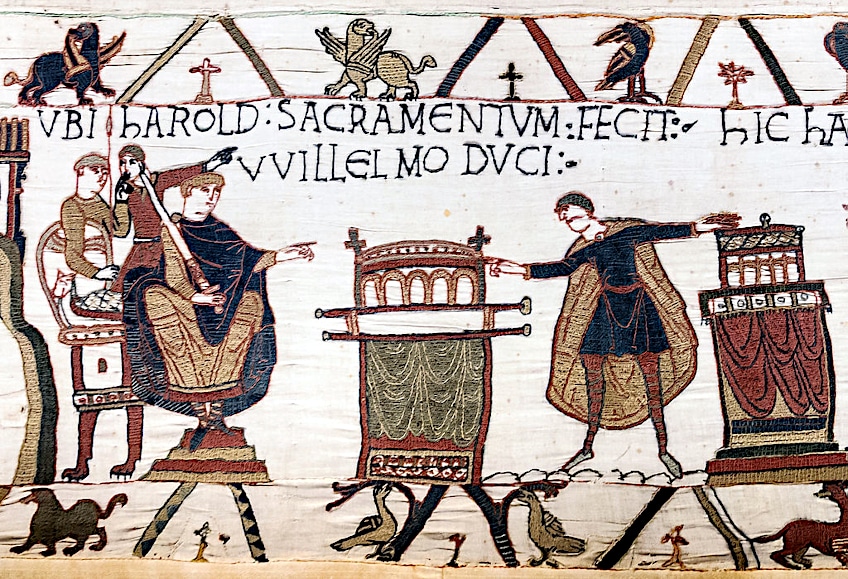 Scene 23 on the Bayeux Tapestry: Harold swearing an oath on holy relics to William, Duke of Normandy that he would support his claim to the English throne (1070’s); Myrabella, Public domain, via Wikimedia Commons
Scene 23 on the Bayeux Tapestry: Harold swearing an oath on holy relics to William, Duke of Normandy that he would support his claim to the English throne (1070’s); Myrabella, Public domain, via Wikimedia Commons
It would not be long before Duke William initiated preparations for his invasion of England, and he assembled an army of Norman-French soldiers to exact his revenge. Whether or not William had other motivations beyond claiming the English throne is unclear and remains disputed by historians to this day, though it remains possible that he had other political or personal incentives for invading England.
All in all, the relationship between Harold Godwinson and Duke William was by no means a black-and-white scenario. It featured both cooperation and rivalry at times, with the latter succeeding in the end and leading to the death of the freshly elected King Harold. Historical records suggest that they knew each other personally and had at some point even featured a level of friendship. However, their competing claims to the English throne would stir up a bitter conflict and lead to a gruesome battle that decisively altered the course of English history. During the Battle of Hastings, Harold Godwinson would be slain in battle. After he and his army defeated the English and slew Harold Godwinson, Duke William would then assume the throne of England on Christmas Day two months later.
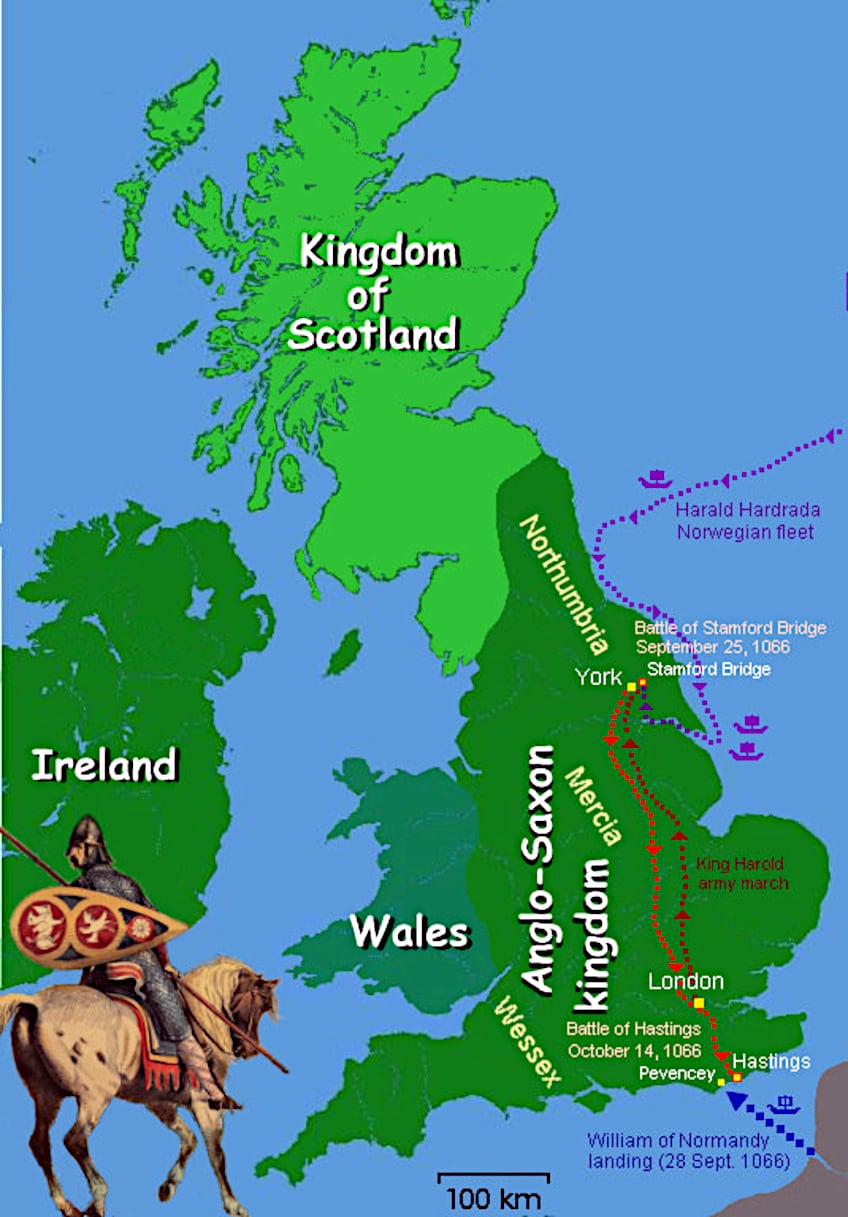 Norman troop movements leading up to the Battle of Hastings; Vissarion, Public domain, via Wikimedia Commons
Norman troop movements leading up to the Battle of Hastings; Vissarion, Public domain, via Wikimedia Commons
Saxon Warriors and Norman Knights: The Armies That Clashed at Hastings
The exact figures of either side’s military might remain a matter of heated debate. There are several sources indicating that King Harold had amassed a large fighting force, but there is just as much proof to indicate that he was yet to assemble the entirety of his army. Nevertheless, what we do know is that his units were composed almost entirely of Anglo-Saxons, whereas William’s army was host to soldiers from not only Normandy but from Aquitaine, Maine, Brittany, and France. The contemporary consensus among most historians is that both armies were composed of roughly 5000 to 7000 men each. There is general agreement, however, in the notion that the Duke’s army was fewer in number by some margin yet still had a greater mass of cavalrymen.
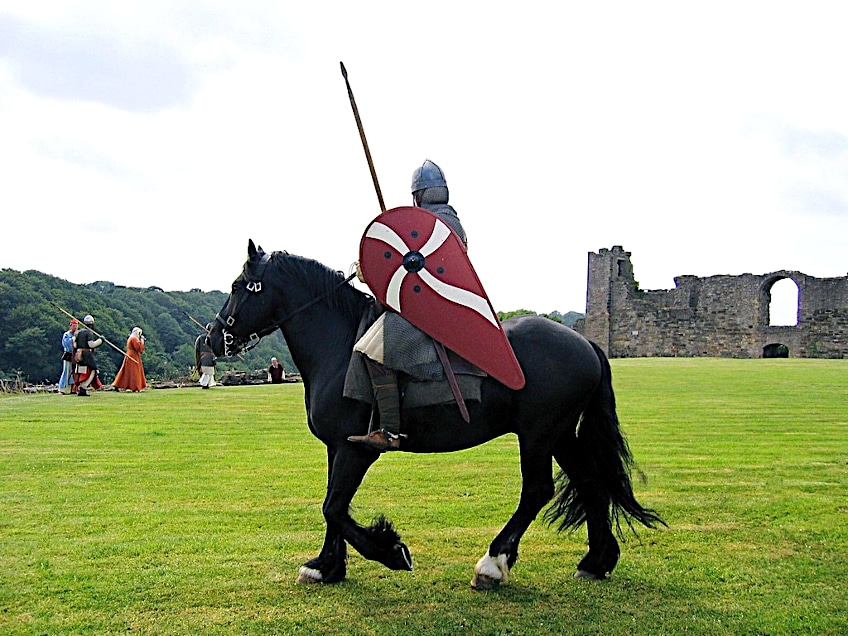 Historical re-enactor dressed as a Norman Knight; Norman Knight at Richmond Castle by Jeff Buck, CC BY-SA 2.0, via Wikimedia Commons
Historical re-enactor dressed as a Norman Knight; Norman Knight at Richmond Castle by Jeff Buck, CC BY-SA 2.0, via Wikimedia Commons
Anglo-Saxon Army
Harold Godwinson’s army was primarily composed of infantrymen fighting on foot. Each warrior was both well-trained and experienced in battle, with many among them being members of the fyrd, which was a militia of countrymen whose service was sworn to the army when called upon. These men were armed with spears, swords, and shields. A contingent of housecarls was also present among the English ranks. These were professional soldiers whose loyalty fell to the King whom they served as bodyguards. Although predominantly composed of native Englishmen, Welshmen, and Flemish mercenaries were also counted among the army’s ranks.
One key facet in the army’s tactical arsenal was its shield wall formation, something which they were known to have a mastery of. Throughout the era of Anglo-Saxon dominion in England, the shield was a tactic that played an important role in the many successes of their military campaigns. To form a shield wall, soldiers would align themselves side by side, shoulder to shoulder with their shields overlapping and interlocked to form a barrier that offered no easy means through which to break apart.
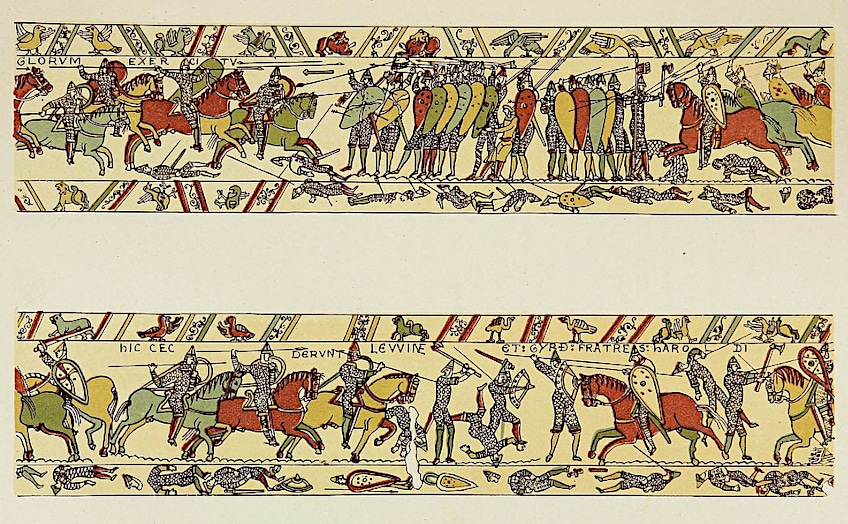 Illustrations from The Bayeux tapestry elucidated by Bruce, J. Collingwood (John Collingwood) depicting the weaponry and battle tactics used at the battle of Hastings (1805-1892); Internet Archive Book Images, No restrictions, via Wikimedia Commons
Illustrations from The Bayeux tapestry elucidated by Bruce, J. Collingwood (John Collingwood) depicting the weaponry and battle tactics used at the battle of Hastings (1805-1892); Internet Archive Book Images, No restrictions, via Wikimedia Commons
Norman-French Army
The composition of the Norman army was more multifarious than its adversary, containing not only infantrymen but also contingents of archers and cavalrymen on horseback. The cavalry was composed of heavily armored knights trained in the art of mounted combat with both swords and lances. The army’s archers were also equipped with longbows, which were formidable ranged weapons that would come to play a dominant role in the tactics of medieval warfare until the introduction of gunpowder. At the time, the longbow’s range and penetrative capabilities were unrivaled.
Duke William’s army was made up of Norman soldiers predominantly, but also included French soldiers and mercenaries from elsewhere. The army was in no deficit of discipline among its ranks and each man stood well-armed to the teeth. The Norman-French army was both highly trained and well-versed in the art of large-scale medieval warfare.
Comparison of Tactics
Both armies were redoubtable in their own right, and neither side would be able to take ground from the other without considerable effort. Harold Godwinson’s courageous army would rely on maintaining an impermeable shield wall, while Duke William’s army would count on its cavalry charges and the skill of its archers.
Events at the Battle of Hastings
It would be the Normans to initiate the start of the conflict by unleashing devastating volleys of arrows toward the English line. Harold’s men would depend on the fortitude of their shield wall to avoid the rain of death sent their way by William’s highly trained archers. Although this did not prevent casualties altogether, the shield wall was effectively maintained enough to prevent the destruction of the English army’s formation.
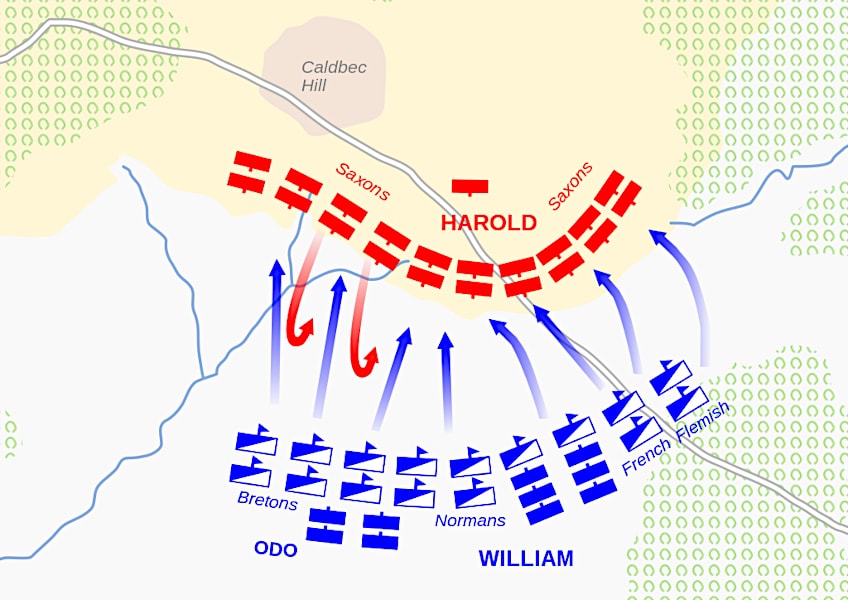 Battle formations at the beginning of the Battle of Hastings; Andrein, CC BY-SA 3.0, via Wikimedia Commons
Battle formations at the beginning of the Battle of Hastings; Andrein, CC BY-SA 3.0, via Wikimedia Commons
The First Charge
After their arrows failed to weaken their enemy’s formation, the Norman army advanced toward the English wall. The front lines of battle were grueling and brutal and the Norman knights would have to rely on their superior body armor to take advantage of the close range of combat. Harold’s spearmen, however, proved too effective for most of the Norman infantry to steal any ground, and a breakthrough was not achieved.
The Norman cavalry would then charge directly into the English barrier in an attempt to shatter the wall. However, the English managed to repel many attempts using the melee distance afforded by their spears. The shield wall successfully held firm, preventing the Norman cavalry from puncturing holes through which their foot soldiers could slip past the blockade.
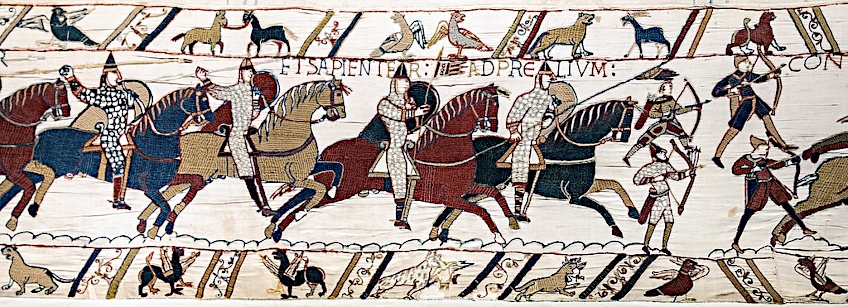 Scene 51 on the Bayeux Tapestry: Norman knights and archers (1070’s); Myrabella, Public domain, via Wikimedia Commons
Scene 51 on the Bayeux Tapestry: Norman knights and archers (1070’s); Myrabella, Public domain, via Wikimedia Commons
Combat would continue for several hours without either army gaining any sort of substantial advantage over the other. That was until rumors broke out among the Anglo-Saxon ranks that the Duke of Normandy himself had been slain in the fray, fueled by the Norman army’s retreating cavalry and left flank. The English were further persuaded into believing that the Duke had died since two of his horses had been killed prior during the melee. In reality, William’s cavalry had merely been regrouping to prepare for another charge, an action which convinced the Bretons who made up his left flank that they were being routed, which would give reason for them to fall back as well. Eager to hunt down their fleeing opponents, the rightmost ranks of the English army broke off to give chase, a move that would compromise the rigidity of its shield wall.
An Opportunity Emerges Amongst Chaos and Confusion
Seeing his men fleeing with the Saxons hot on their heels gave William reason to call for the complete withdrawal of his men from the frontlines and back down the slope from whence they had first charged. To abate a routing of his army, Duke William removed his helmet and rode through his ranks, proclaiming that he was indeed alive. He then gave order to a contingent of knights to attack the Englishmen who had given chase from their flank, managing to reform some of the fleeing Bretons as he did so. The pursuers soon found themselves being routed instead, perishing at the hands of the Normans as they were boxed in and forced to give their final stand on a small hillock too far away for the bulk of their army to offer any assistance.
Wanting to take full advantage of the now-thinned lines of the Anglo-Saxon army, Duke William led the charge in a general assault. The sky turned black above the Norman army’s heads as their advance was met with a volley of spears, stones, and axes. Nevertheless, they soon found themselves locking swords with their enemy yet again. Alas, yet again, the fortification of the Anglo-Saxon shield wall once again proved indomitable and the Normans were later in retreat from the ridge once more.
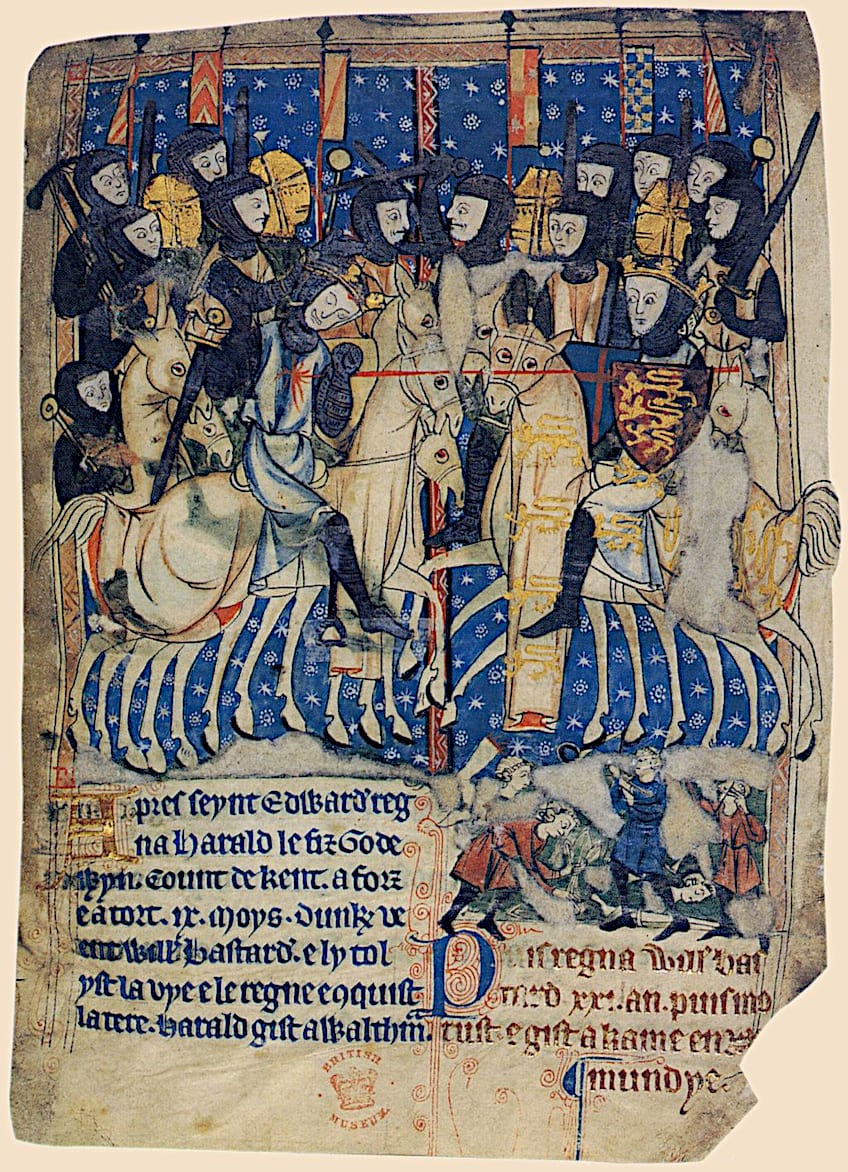 Duke William of Normandy defeats King Harold of England at the Battle of Hastings from the England chronicle in French (c. 1280-1300); See page for author, Public domain, via Wikimedia Commons
Duke William of Normandy defeats King Harold of England at the Battle of Hastings from the England chronicle in French (c. 1280-1300); See page for author, Public domain, via Wikimedia Commons
After some much-needed rest and recuperation, the Duke then attempted to recreate the confusion among the English ranks that had made for the last failed attempt at routing his army. He did so by ordering his cavalry to charge the shield wall once more but at different points along its length. They would engage in brief skirmishes at all points before feigning another retreat in hopes that this would persuade another foolish chase by another section of Harold’s army. Although the English were not so dumb as to fall for the ploy a second time, Harold did lose more men during the skirmishes, which only further thinned his lines. At this point, many of the housecarls and highly trained units that made up his forward ranks had to be replaced with the less experienced men of the fyrd.
Lightning Strikes Twice
Upon the next charge of cavalrymen, the knights rode in with deepened resolve and the support of their archers. Much of their afternoon was spent exchanging blows with the front line of the Anglo-Saxon army before they broke away, the retreat seemingly either from fatigue or sustaining too many casualties. This time, however, some of Harold’s men were emboldened enough to break away from the shield wall to give chase to the fleeing knights. The ploy has succeeded. After their pursuers had crossed the battlefield far enough that no swift retreat to the safety of their lines was possible, the knights pivoted their horses back in the direction of their foes. Without the shield wall to barricade them from the charge of the Norman knights, and with much of their energy spent during their pursuit down the ridge, they were slaughtered down to the last man.
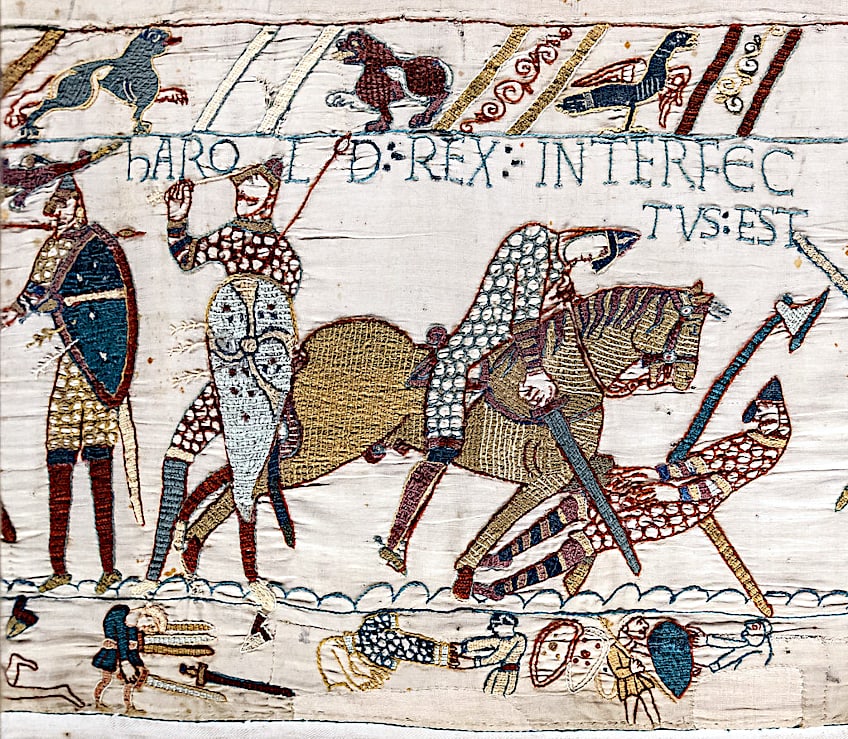 Scene 57 on the Bayeux Tapestry: the death of King Harold at the Battle of Hastings (1070’s); Myrabella, Public domain, via Wikimedia Commons
Scene 57 on the Bayeux Tapestry: the death of King Harold at the Battle of Hastings (1070’s); Myrabella, Public domain, via Wikimedia Commons
With the shield wall now bereft of far too many men for it to hold against another assault, the Norman army slaved up the ridge once more to punish Harold’s diminished army. Unable to rely upon the sole defensive tactic that had lent them any advantage during the battle thus far, the Englishmen were now at the mercy of their foes’ superior offensive weaponry. It would not take long before Harold’s army could no longer hold formation, and the military cohesion of his units soon crumbled under the might of the Norman invaders. It seemed at last that Harold Godwinson would face William’s wrath, his army now just as broken as the oath that had cursed him to this fate.
A mere nine months after the crown of England was first rested upon his head, Harold Godwinson would perish to a loosed arrow that is said to have struck him in the eye. Most tragically, many believe it to have been the casualty of friendly fire. Shortly thereafter, he was pulled down from his horse and viciously hacked to shreds by the knights of Normandy. The death of their king proved a crushing blow to what little resolve remained of the Anglo-Saxon army who now fled in terror as the heartened Normans chased them down to bitter ends.
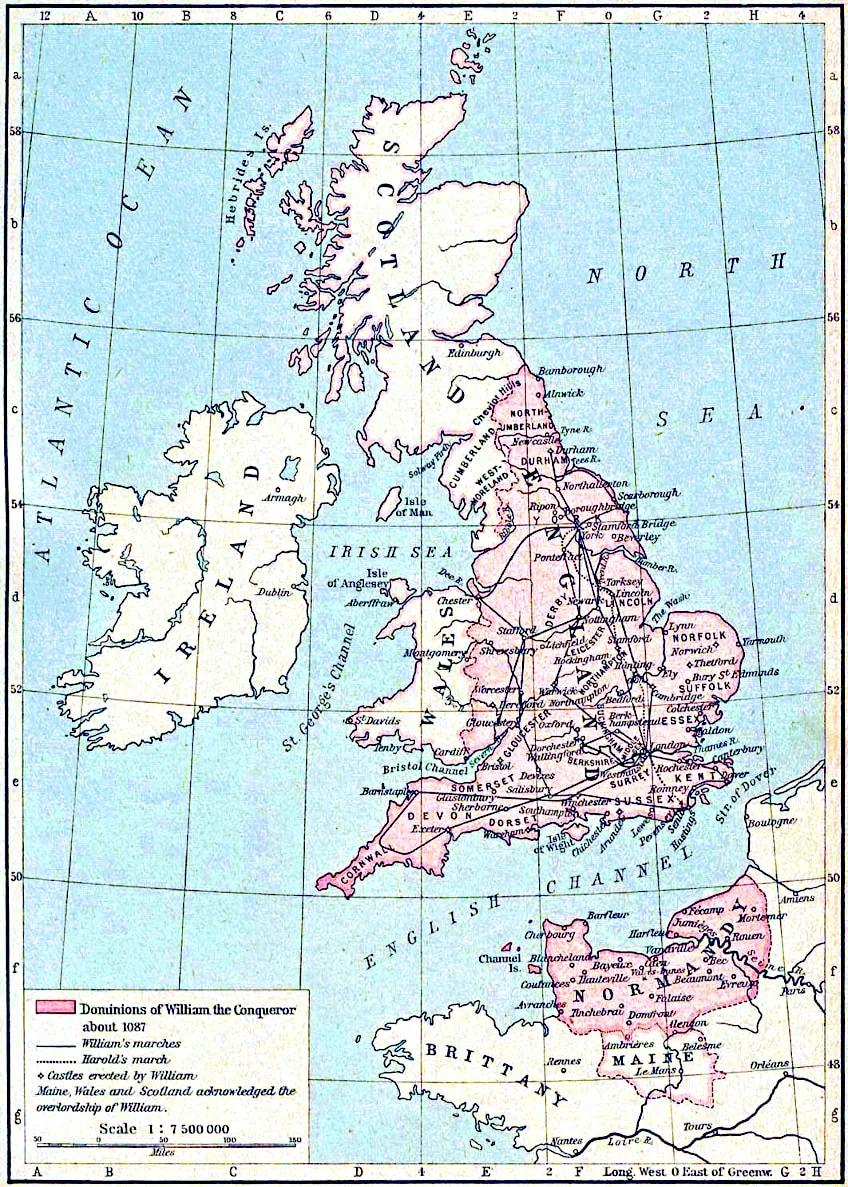 Map showing the dominions of William the Conqueror around 1087; Historical Atlas by William R. Shepherd, Public domain, via Wikimedia Commons
Map showing the dominions of William the Conqueror around 1087; Historical Atlas by William R. Shepherd, Public domain, via Wikimedia Commons
Aftermath
On the 14th of October, 1066, the English army was defeated, and their leader and king lay slaughtered in the mud. Normandy’s victory saw its duke become the new king of England, and thus began the reign of William the Conqueror. On Christmas day of that same year, William would be anointed king in Westminster Abbey, marking the end of the Anglo-Saxon period that had prevailed for over 600 years. With the beginning of Norman rule came much change to all aspects of English culture and society. This time was fraught with upheaval and transformation, be it for better or for worse.
William the Conqueror would use his time on the throne of England to introduce the infamous feudal system, a hierarchical social structure featuring lords and their vassals. The entirety of England’s nobility was removed and replaced by Normans loyal to their new king. William would be the one to push for the construction of castles in England, many of which, like the Tower of London, are still standing today, to consolidate his rule and protect his dominion against invaders. Even the English language itself would come to change during this time, with it becoming the tongue spoken by commoners while the kingdom’s nobility spoke French – a trend that would only be broken by Henry V decades later.
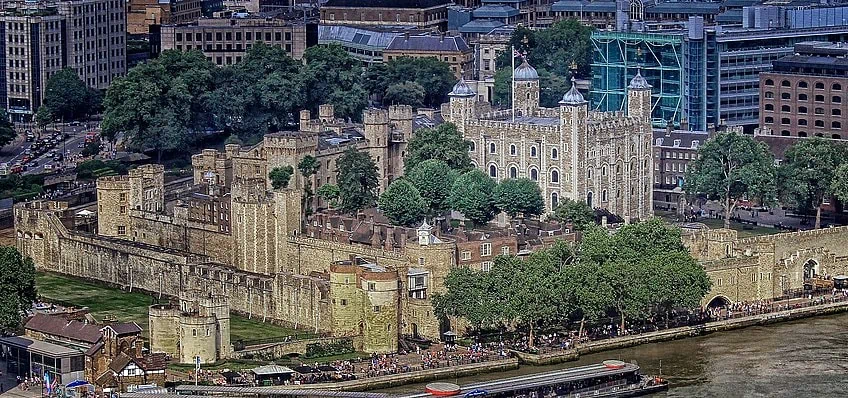 The Tower of London (construction began 1066); Ray in Manila, CC BY 2.0, via Wikimedia Commons
The Tower of London (construction began 1066); Ray in Manila, CC BY 2.0, via Wikimedia Commons
In conclusion, the Battle of Hastings was one of the most pivotal moments in the history of Medieval England. William the Conqueror’s victory would see him claim the throne of England, which would subsequently put an end to England’s long reign of the Anglo-Saxons. This shifted the political, cultural, and societal landscape of England in ways that still impact the nation to this very day.
Frequently Asked Questions
What Happened at the Battle of Hastings?
Following the death of King Edward the Confessor, the armies of King Harold Godwinson and Duke William would come to clash near Hastings in England, to settle the matter of who deserved to preside over the English throne. Despite the strength of its iconic shield wall tactics, the English army would be bested by the ingenuity and resolve of the better-armed Norman army. Harold would die in the conflict and Duke William would be crowned King of England on Christmas of that same year.
What Year Was the Battle of Hastings Fought?
The Battle of Hastings was fought on the 14th of October, 1066, on Senlac Hill, approximately 7 miles northwest of Hastings in England.
What Year Was the Battle of Hastings Immortalized in the Bayeux Tapestry?
The Bayeux Tapestry was likely created in 1077 to decorate the freshly erected Bayeux Cathedral, which was owned by Bishop Odo who was a half-brother to William the Conqueror.

I am deeply passionate about history and am constantly fascinated by the rich and complex stories of the past. As the editor-in-chief of learning-history.com, I have the opportunity to share this passion with a wide audience through the creation and distribution of engaging and informative content about historical events, persons, and cultures. Whether it’s through writing articles and blog posts or creating videos or podcasts, I strive to bring the past to life in a way that is both accurate and enjoyable. My expertise in history, combined with my strong writing and communication skills, allows me to effectively communicate complex historical concepts and make them accessible and interesting to a wide range of readers. I am truly grateful for the opportunity to share my love of history with others through my work on learning-history.com.

